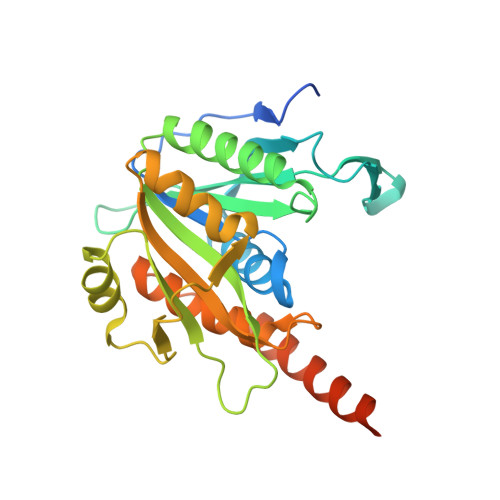An archaeal homolog of proteasome assembly factor functions as a proteasome activator
Kumoi, K., Satoh, T., Murata, K., Hiromoto, T., Mizushima, T., Kamiya, Y., Noda, M., Uchiyama, S., Yagi, H., Kato, K.(2013) PLoS One 8: e60294-e60294
- PubMed: 23555947
- DOI: https://doi.org/10.1371/journal.pone.0060294
- Primary Citation of Related Structures:
3VR0 - PubMed Abstract:
Assembly of the eukaryotic 20S proteasome is an ordered process involving several proteins operating as proteasome assembly factors including PAC1-PAC2 but archaeal 20S proteasome subunits can spontaneously assemble into an active cylindrical architecture. Recent bioinformatic analysis identified archaeal PAC1-PAC2 homologs PbaA and PbaB. However, it remains unclear whether such assembly factor-like proteins play an indispensable role in orchestration of proteasome subunits in archaea. We revealed that PbaB forms a homotetramer and exerts a dual function as an ATP-independent proteasome activator and a molecular chaperone through its tentacle-like C-terminal segments. Our findings provide insights into molecular evolution relationships between proteasome activators and assembly factors.
- Graduate School of Pharmaceutical Sciences, Nagoya City University, 3-1 Tanabe-dori, Mizuho-ku Nagoya, Japan.
Organizational Affiliation:

















